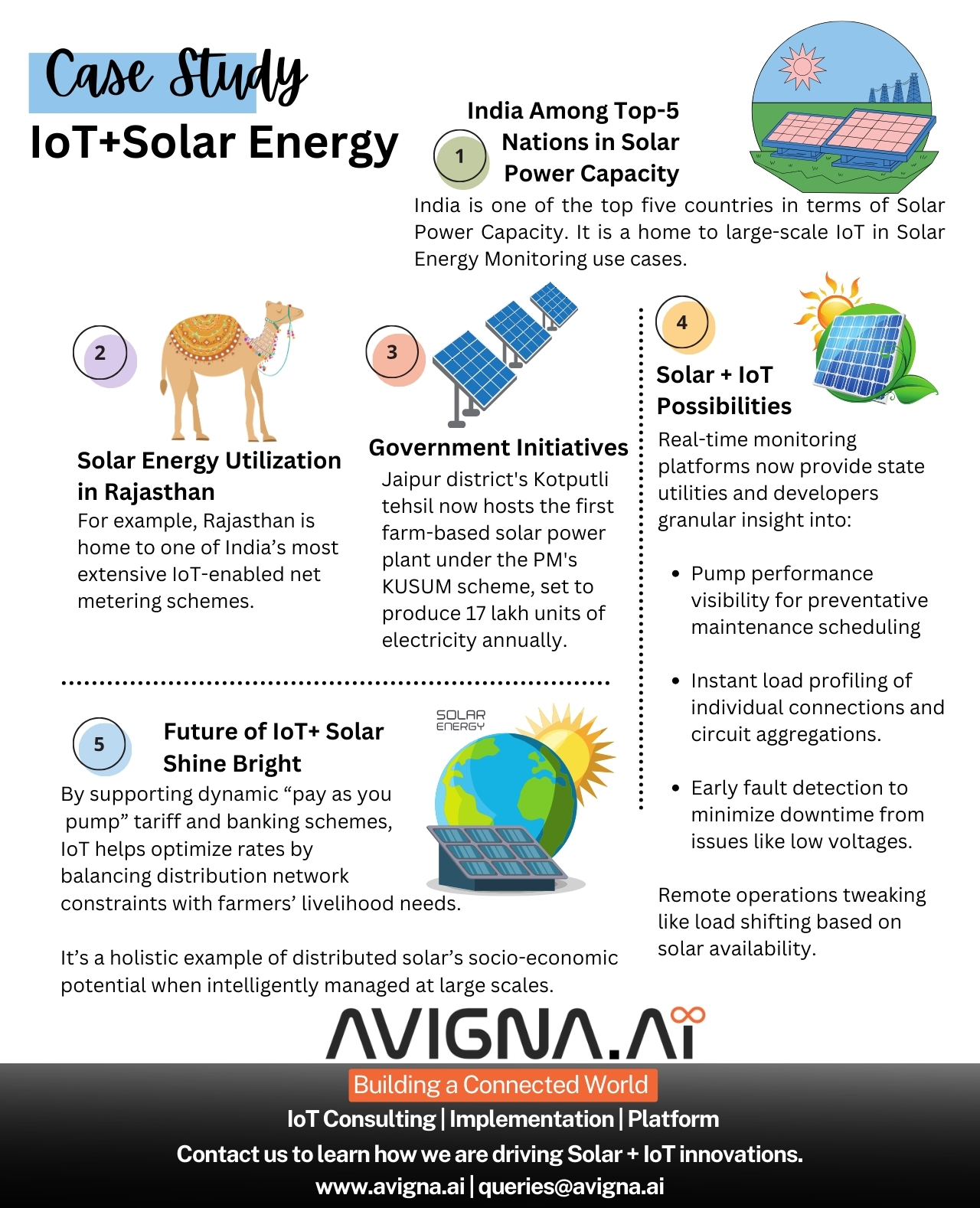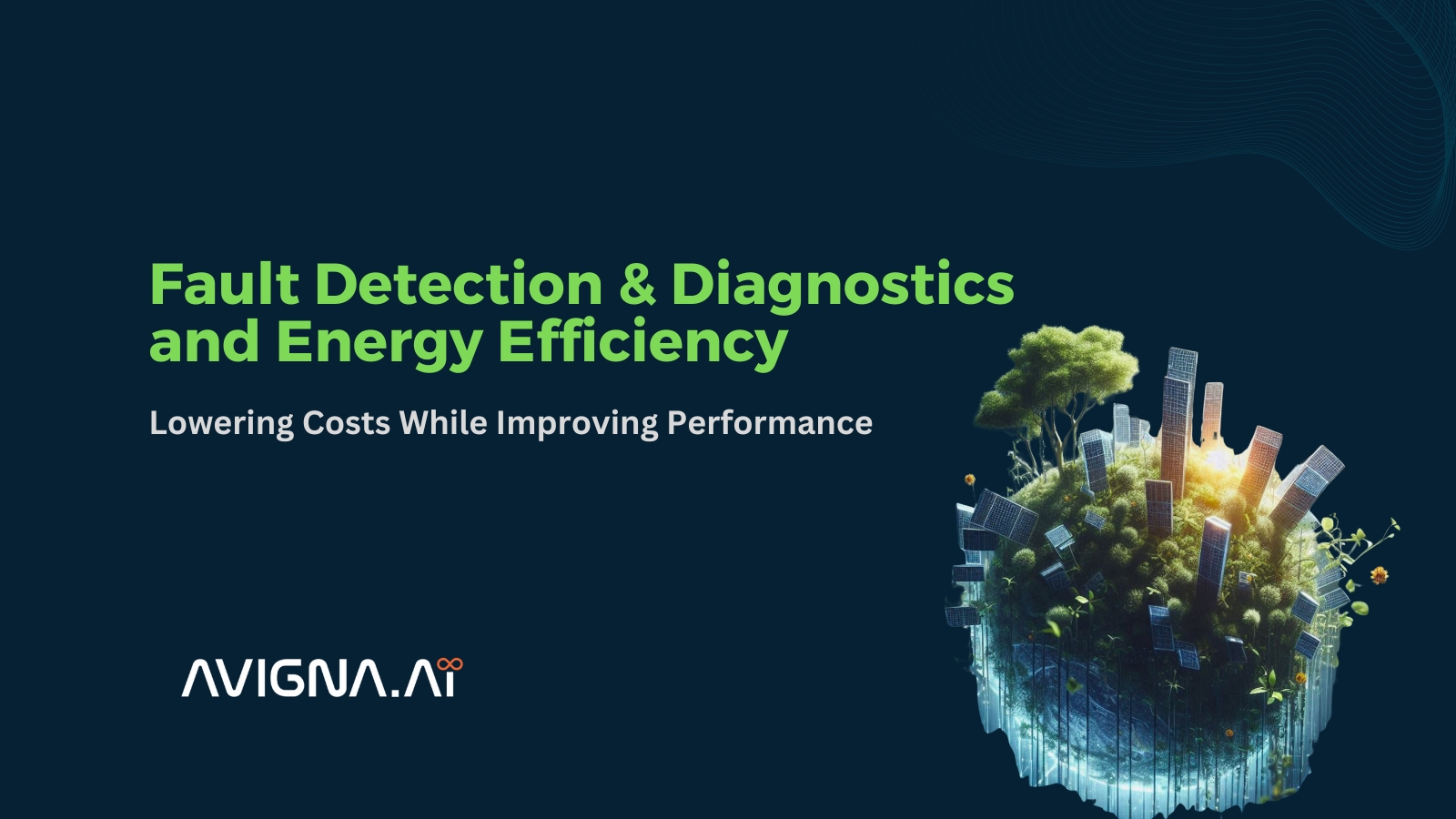The Internet of Energy: How IoT Enhances Solar Efficiency and Uptime
The energy sector is no stranger to disruption. In the recent years, a powerful shift has begun – where energy meets intelligence. Through this article, I welcome you to the era of Internet of Energy (IoE) where smart grids, connected devices, and real-time data are transforming how we produce, distribute, and consume power.
Specifically, in this article, I will highlight solar power, as it stands to gain immensely from IoE innovations. Let’s delve into how IoE is shaping the future of energy and supercharging the solar sector for years to come.
Understanding Internet of Energy (IoE)
The Internet of Energy refers to the installation, upgradation, and automation of electric infrastructures for energy producers and manufacturers with the help of IoT. It is used as an alternative for cleaner, less-wasteful method of energy production including solar power. The IoE enabled solar energy systems collect, transmit, and analyze vast amounts of data for optimization and better performance in real-time.
According to industry reports, the global IoE market valued at $160.53 billion in 2024 will reach $191.16 billion by 2025. This valuation will reach $669.13 billion by 2032 with a CAGR of 19.45%. This phenomenal rate of growth is a testament to the powerful potential of IoT-enabled solar growing solutions.
IoT-Enabled Solar Energy Unlocking Efficiency and Reliability
Smart sensors, inverters, and cloud-based analytics, along with IoT-enabled solar systems are the building blocks of the IoE revolution. These work together to create the best synergy in efficiency, reliability, and cost savings for the end-user of solar energy in ways such as:
Real-Time Monitoring and Optimization
IoT sensors distributed throughout the solar installation a record data on energy generation, consumption, local environmental conditions, and equipment performance. This raw data gets uploaded to cloud-based platforms where the analysis is done. With big data analytics and machine learning algorithms, it detects patterns, identify anomalies, and recommend corrective actions.
For example, solar panels with IoE adjust their orientation according to live weather updates and thus optimize energy capture and its output. On the other hand, the inverters allocate solar power, battery power, and grid power dynamically for the most efficient use of available energy resources.
Predictive Maintenance and Increased Uptime
IoE when integrated into solar systems predict and rectify potential issues before they turn into expensive failures or downtime. Sensors monitor the health and operational characteristics of solar system components. These include panels, batteries, and inverters, and alerts the respective department about any degradation or impending failure.
By using this data, maintenance, and replacements can be scheduled by solar system owners to avoid unplanned outages. This predictive maintenance set up also increases the life of the solar infrastructure.
Enhanced Energy Management and Cost Savings
IoT-enabled solar systems bring in huge pay-offs for both residential and commercial end-users. Solar owners become able to take advantage of real-time data on energy generation and consumption. With this data, they can adjust their consumption patterns accordingly. Now, energy-intensive tasks such as cooking and washing can be carried out during peak solar generation hours.
Apart from this, consumers have an upper hand as they are becoming prosumers. It means that they produce their energy for consumption. This reduces their dependence on grid supplied electricity which is must costlier than solar energy. IoE also supports smarter battery management by charging and discharging more efficiently. It increases the storage system’s life and lowers the cost of replacement in the long run.
Case Studies
The real-life case studies show the innovative effects of IoE in the solar energy industry.
Residential Example (Kerala, India)
A Kerala-based homeowner was able to reduce dependence on grid electricity by 40% by installing IoT enabled solar system for his home. This homeowner scheduled the high-energy appliances, water heaters, and dishwashers, among others, to operate during solar peak hours. Thus, it created less dependency on grid electricity.
Commercial Example (Pune, India)
A small scale factory is coupled with a hybrid solar system, which, during high-tariff grid hours, experiences an automatic switch to battery backup. Being an IoT-based implementation, the factory managed to save more than ?12,000 per month in electricity bills.
The Future of Solar with AI, Blockchain, and Smart Grids
With the growing inclusion of IoE in solar energy, the merging of cutting-edge technologies like AI and blockchain is expected to release even more possibilities.
AI-Powered Energy Forecasting and Management
AI-powered algorithms can enable solar systems to harness their historical data, weather forecasts, and real-time inputs from sensors. This data will be used to anticipate generation and demand with a high level of precision. This improved forecasting equips battery utilization, load management, and direct grid integration in the best possible manner.
Peer-to-Peer Energy Trading with Blockchain
The integration between IoT, solar energy, and blockchain technology can help in establishing a decentralized, peer-to-peer energy trading. Here, a solar-enabled household or industrial unit can sell its surplus energy to neighbors. It will help in fostering a community-based energy market and tilting the balance in favor of renewable resources.
Smart Grid Integration and Demand Response
As IoT-enabled solar systems increase, they will integrate into smart grids more efficiently. It will help in dynamic load balancing and demand response capabilities. Grid operators can work with IoT data to get better insights into the ups and downs of renewable energy supply and storage. Thus, imparting maximum stability and resilience to the power system under all conditions.

Conclusion
As the world seeks a sustainable energy future, Internet of Energy will amplify solar power’s transformative effects even further. The world will see IoE-enabled solar systems leading the transformation of the energy world. It will be a landscape where every wattage of renewable energy is harnessed with unmatched precision. In return offering unprecedented opportunities for a greener, more resilient energy environment.
Ready to future-proof your energy infrastructure? Discover how IoE can unlock smarter, more efficient solar solutions to your organization. Schedule a free consultation with us and explore what’s possible. Reach us at queries@avigna.ai. Follow us on LinkedIn for latest updates.




